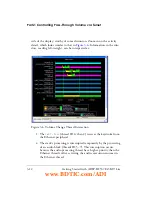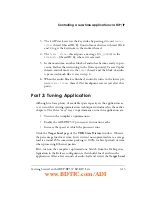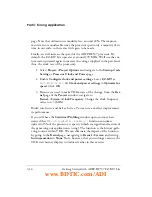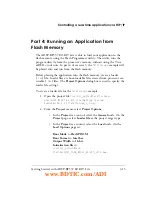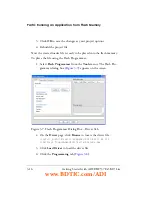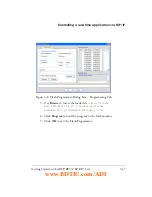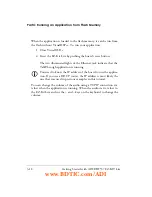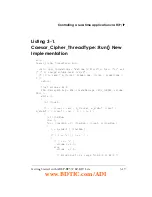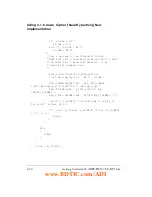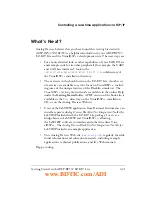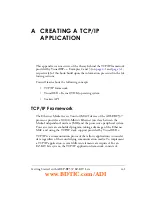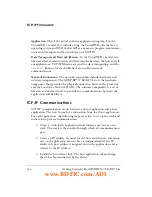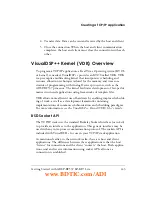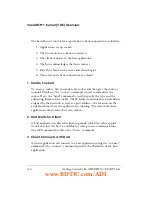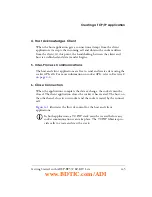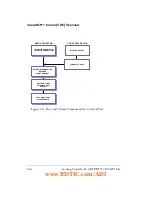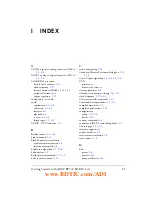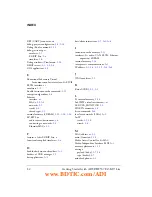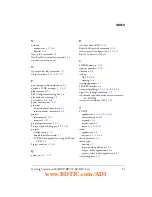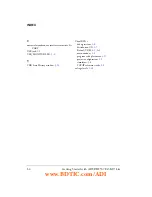
Vi+ Kernel (VDK) Overview
A-4
Getting Started with ADSP-BF537 EZ-KIT Lite
The basic flow of control for a typical host–client connection is as follows:
1. Applications set up sockets
2. The host waits for a client to contact it
3. The client connects to the host application
4. The host acknowledges the client contact
5. Data flow between the server and client begins
6. The server and client connections are closed
1. Create Sockets
To create a socket, first instantiate the socket and then give the socket a
unique IP address. The “socket” command is used to instantiate the
socket. Next, the “bind” command is used to specify the type and the
addressing format of the socket. The IP address contains the actual address
assigned by the network, as well as a port address—the location on the
actual machine where the application is running. The server and client
applications must create their own sockets.
2. Host Waits for Client
A host application is placed in listening mode, which lets other applica-
tions know that the host is available for inter-process communications.
The API command for this is the “listen” command.
3. Client Connects with Host
A client application can connect to a host application using the “connect”
command. The “connect” command specifies the IP address of the host
application.
www.BDTIC.com/ADI

